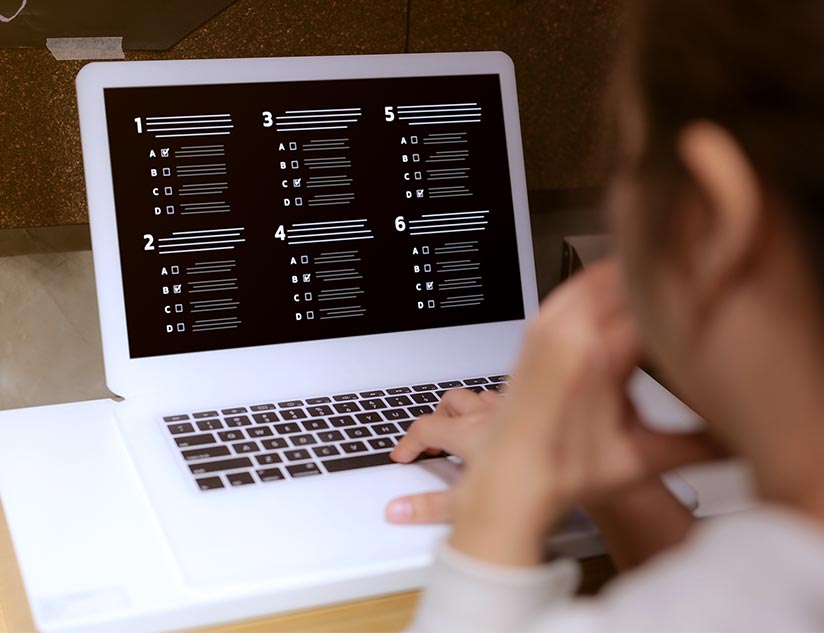Assessments are a crucial part of the education process. In schools, summative assessments have traditionally been used to determine concept mastery and academic progress. These assessments measure what students have learned at the end of a unit and ensure they have met the necessary standards to earn certification for completing a grade or for school completion.
However, assessments can serve a formative function as well. When teachers encourage the use of formative assessment, they can better meet diverse student needs through differentiation and adaptation of teaching. With frequent, interactive assessments of student progress, they can identify areas that need improvement and promote an effective and constructive culture of learning. It helps with raising levels of student achievement while ensuring greater equity of student outcomes.
This is why we need to transform assessment of learning into assessment as a tool for learning.
Quick Ways to Shift to Assessment as Learning
In recent years, the need for teachers and school administrators to get immediate feedback on student progress has become extremely important, especially with remote learning during COVID-19. Thus, formative assessments are being increasingly used as they offer a great deal of flexibility for evaluation during the learning process.
Here are five smart ways of incorporating formative assessments to improve learning in classrooms:
1. Start with Quality Questioning
Teachers usually spend 30%-50% of their time asking questions. However, if they shape these questions in a way that stimulates students’ thinking beyond simply recalling the facts, they can serve as a perfect tool for formative assessment. For instance, if you ask a student, “What caused that to happen?” or “How does one aspect relate to another?” it will encourage them to seek evidence, explain or relate concepts, ideas, or opinions. You can even pick open-ended questions to not only stimulate more engaging discussions but also check how well the student grasps the nuances of a subject.
2. Try Ungraded Check-Ins
Another way to use assessments as learning tools is to encourage students to engage in multiple iterations on their papers or presentations. As a teacher, you can offer verbal feedback or comments so that they get specific, detailed, and constructive feedback along the way. It will help them improve their presentation skills and prepare a stronger final presentation.
3. Use Self-Assessments
Self-assessment tools help students reflect on their own learning process and articulate what they are good at, where they are struggling, what they have learned, and what they still have to learn, so that they can meet their course goals or standards. You can use video-based and interactive assessments to make the entire process engaging and motivating for students. And since formative assessments are not high stakes tests, your students can apply their skills and knowledge in an evaluation setting that is risk-free, and therefore stress-free.
4. Student-Generated Questions
During reading assessments, you can ask students to develop their own questions and share them in small groups. They can vote on the best questions and then share their top picks with the larger class. It will not only stir up healthy discussions but also stimulate thinking and reasoning. You can clearly assess how individual students are processing the information as they learn.
5. Ask Students for Exit Slips
At the end of every small lesson, you can ask students to quickly jot down their responses to a few questions. You can then evaluate these responses to see where some students are struggling and modify your next lesson accordingly.
3 Major Benefits of Student-Centered Learning
When you start using assessments as a part of the learning process, you push for student-centered learning. As the needs of each student are catered to, you can get the benefits of personalized learning, such as:
1. Self-Paced Learning
Different students learn at different speeds. So, when a teacher moves at a single speed, some students are bound to be left behind at the end of each lesson. However, with personalized learning, the speed of the lesson can be modified to the needs of each student.
2. Cater to Different Learning Styles
Just like learning speed, students have different learning styles as well. While some of them may be auditory learners, others could be visual learners. Research indicates that 65% of the population is made up of visual learners. When you use assessments as learning tools, you can actually modify your learning process to cater to different learning styles effectively.
3. Higher Engagement
When assessments are conducted along the learning path, it can actually boost student engagement. It is usually because of the flexibility of the choice of learning methods and assignments due to which students achieve a higher sense of competence and autonomy.
The “Assessment as Learning” Strategy
1. Set Clear Learning Goals
Prepare well-defined, actionable goals for what your students will learn, master, and be able to efficiently perform by the end of the lesson or unit.
2. Set Success Criteria
Your students should have a clear idea of what their best work should look like and what steps they need to take to achieve that.
3. Give Descriptive Feedback
Offer clear, descriptive, and personalized feedback to students to give them the opportunity to analyze what they have done well and what needs improvement.
4. Encourage Peer & Self-Assessment
Students can assess themselves by comparing their work to the criteria and exemplar. They can also collaborate and use the feedback from their peers to gauge their work.
5. Analyze Individual Learning Goals
It is crucial for students to reflect on the outcomes. You can take time to celebrate accomplishments to boost student confidence. Similarly, if they didn’t perform well, they can still learn a great deal by asking themselves how they would do things differently in the future.
Differentiating Instruction in Response to Formative Assessments
If you want assessments to become an integral part of the instructional process, you should change your approach in three important ways:
1. Use assessments as sources of information for both students and teachers
2. Follow assessments with high-quality corrective instruction
3. Allow students second chances to demonstrate success.
If you have properly assessed your learners, you can help them achieve success by differentiating your instruction based on the information you have gathered. That is why it is important to keep track of the data that you collect. It will help you focus on the needs of individual students when you work with each child or develop lessons for the entire class.
When differentiating your instruction, ask yourself questions like “Which student needs my attention now?”, “Which student needs a different learning approach?”, and “Which students are not learning anything new because they are not been challenged enough?” Formative assessments allow you to proactively engage and understand how well your students are performing long before the summative evaluation takes place. So, use this opportunity to enrich the ongoing learning experience for your students.
The COVID-19 crisis has highlighted the need to move both learning and assessment to the digital setting. With customizable EdTech tools, you can easily administer, score, and share feedback associated with formative assessments. You can also make use of analytics and customized reports to create personalized learning paths for students, with the help of the right digital learning platform.
MagicBox™ is an award-winning go-to outcome-based learning platform equipped with a robust assessment engine. To learn more, contact us for a demo.















